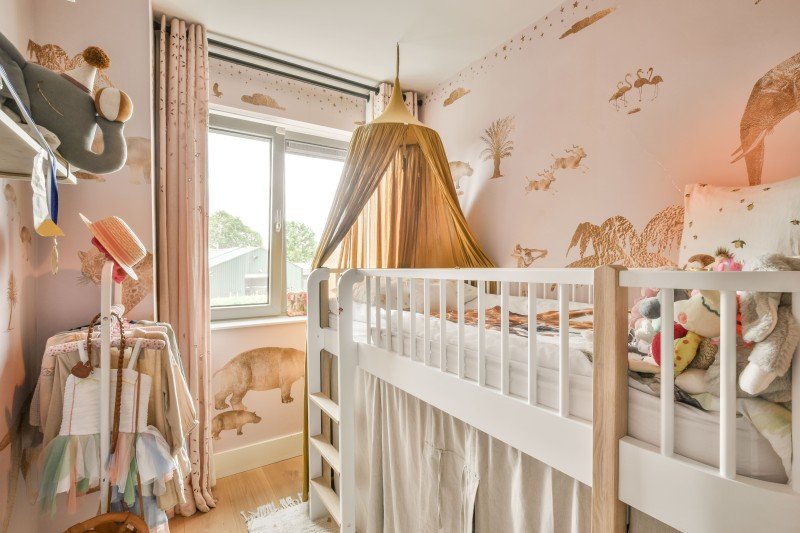Unexpected Business Strategies That Aided Bunk Beds Sale Succeed
Bunk Beds Sale: A Comprehensive Guide to Choosing the Right Bunk Bed for Your Home
Bunk beds have actually long been a staple in kids's bedrooms, using a mix of space-saving efficiency and enjoyable. Whether accommodating siblings, pals on pajama parties, or just making the most of a playroom, bunk beds have ended up being an important aspect in modern family homes. As sales on bunk beds rise, it ends up being significantly essential for consumers to make educated choices when acquiring one. This short article will cover the essentials of buying a bunk bed, from types to security features, as well as pointers for maintaining the integrity of your investment.
Types of Bunk Beds
When considering a bunk bed sale, it's crucial to understand the different designs available on the marketplace. Below are the most common types:
Traditional Bunk Beds: These include 2 beds stacked one above the other, sharing a single frame. They are frequently the most economical option.
L-Shaped Bunk Beds: This design includes one bed positioned vertically and another horizontally. This plan creates additional space below the upper bed, which can be used for storage or a play area.
Lofted Beds: Similar to conventional bunk beds but with no lower bed. Instead, the space beneath can be utilized for a desk, play location, or extra storage.
Triple Bunk Beds: For families with a larger number of kids or regular pajama parties, triple bunk beds provide 3 sleeping locations in a space-efficient design.
Futon Bunk Beds: These designs merge bunk beds and futon sofas. The bottom section converts into a different seating location, boosting performance.
Convertible Bunk Beds: These beds can be separated into two specific beds, making them flexible as children's requirements change in time.
Table 1: Comparison of Bunk Bed Types
Type
Description
Space Efficiency
Extra Features
Traditional Bunk Bed
Two beds stacked vertically
High
Easiest style
L-Shaped Bunk Bed
One vertical and one horizontal bed
Moderate
Play or storage space
Lofted Bed
Elevated bed with open space below
High
Work/play location
Triple Bunk Bed
3 stacked beds
Very High
Accommodates more users
Futon Bunk Bed
Bunk bed with a convertible futon
High
Multi-functional
Convertible Bunk Bed
Can be divided into two different beds
Moderate
Versatility & & durability
Safety Features to Consider
Security is vital when buying a bunk bed. Below are essential safety features to search for:
Guardrails: Adequate guardrails should exist on both sides of the upper bunk to prevent falls. They must be at least 5 inches higher than the mattress.
Ladder Design: Look for strong, wide ladders with slip-resistant rungs. Guarantee that the angle is not too high for simple access.
Stability: Ensure the bed is built with strong materials, such as strong wood or durable metal. The bed needs to not wobble when in use.
Weight Limit: Check the weight capacity of the bunk bed to ensure it can accommodate the desired users safely.
Material Safety: If possible, select beds made from non-toxic materials or those satisfying safety standards for children's furnishings.
Table 2: Essential Safety Features
Feature
Description
Importance
Guardrails
Sides of upper bed to avoid falls
Important for kid security
Ladder Design
Strong, slip-resistant rungs
Help safe and easy gain access to
Stability
Construct quality to prevent wobbling
Guarantees security and durability
Weight Limit
Optimum weight capacity
Prevents accidents
Product Safety
Non-toxic, safe products
Secures kids's health
Maintenance Tips for Bunk Beds
To extend the life of your bunk bed and guarantee ongoing safety, consider the following upkeep ideas:
Regular Inspections: Periodically check the structure for loose screws, bolts, or any indications of wear. Tighten Bunk Bed For Teens georgevreeken.top as needed.
Clean Periodically: Dust and clean the surface areas regularly. Usage suitable cleaners that won't harm the surface.
Examine Weight Limits: Be conscious of weight limitations, particularly with older kids or adults who might want to use the upper bunk.
Prevent Climbing on Guardrails: Educate children not to use guardrails for climbing or playing to reduce the risk of accidents.
Regularly Asked Questions (FAQs)
Q1: What is the age limitation for children to securely use bunk beds?A: While it differs by the producer, lots of suggest that children under 6 ought to not sleep in the upper bunk due to security concerns.
Q2: How can parents discourage risky climbing?A: Setting clear guidelines about bunk bed use and monitoring children can help. In addition, utilizing a bed tent can prevent climbing while creating a fun sleep environment.
Q3: What should I consider when decorating a space with bunk beds?A: Ensure there suffices space around the bunk bed for safe motion, and use the decor to create personalized areas for each child.
Q4: Is a lofted bed suitable for older children?A: Yes, lofted beds can be suitable for older children as long as they satisfy security requirements and the kid is accountable enough to utilize them safely.
Bunk beds serve a functional purpose while adding an element of enjoyable to a kid's bed room. As sales of bunk beds continue to rise, mindful consideration of types, security features, and upkeep practices is essential for moms and dads and caregivers. By comprehending these important aspects, families can find the best bunk bed for their home, making sure both functionality and safety for many years to come. Whether it's for siblings sharing a space or producing a comfortable sleepover space, a well-chosen bunk bed can provide joy and practicality, making it a deserving financial investment.
